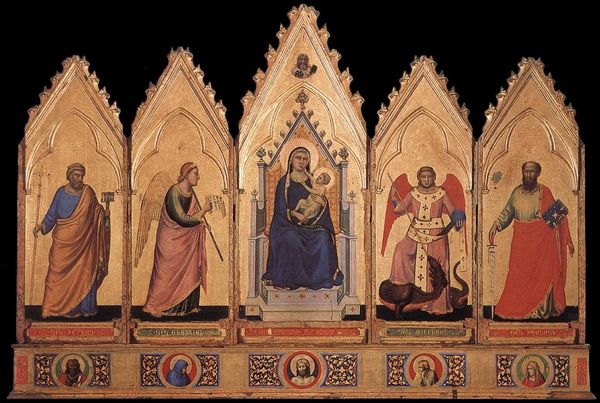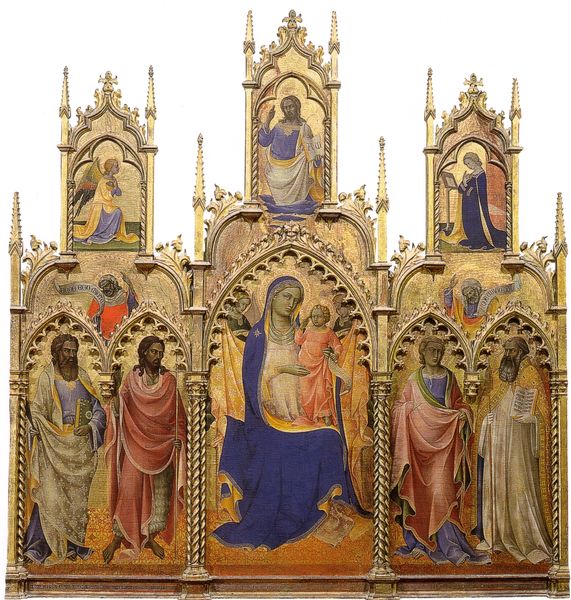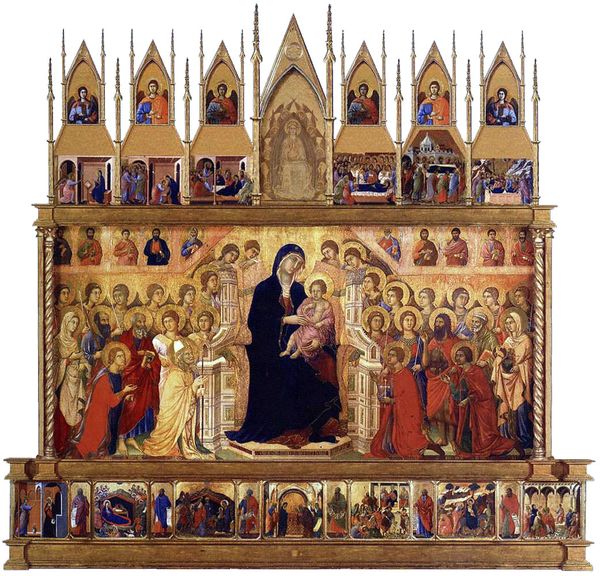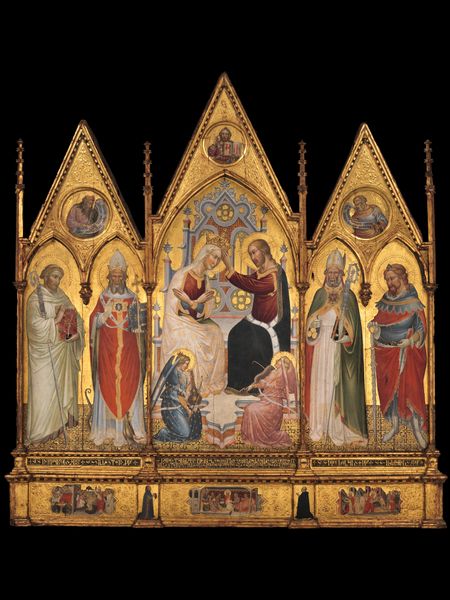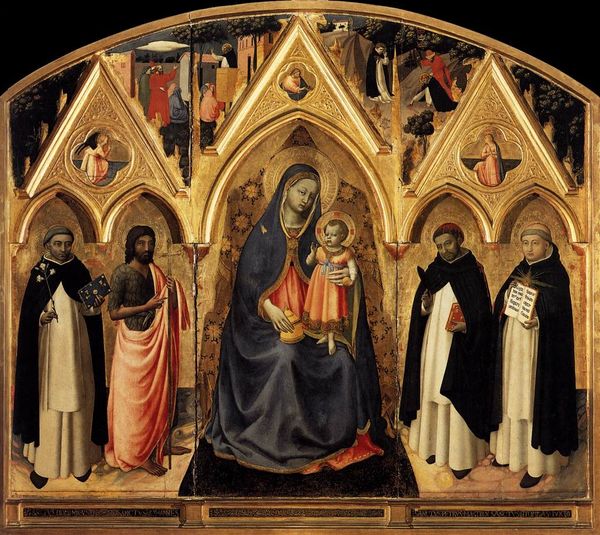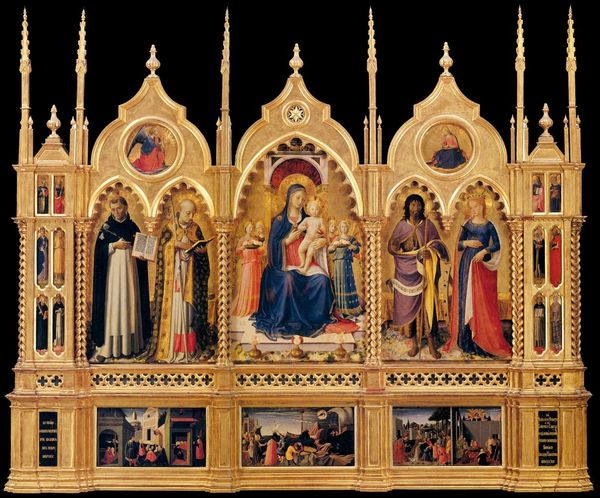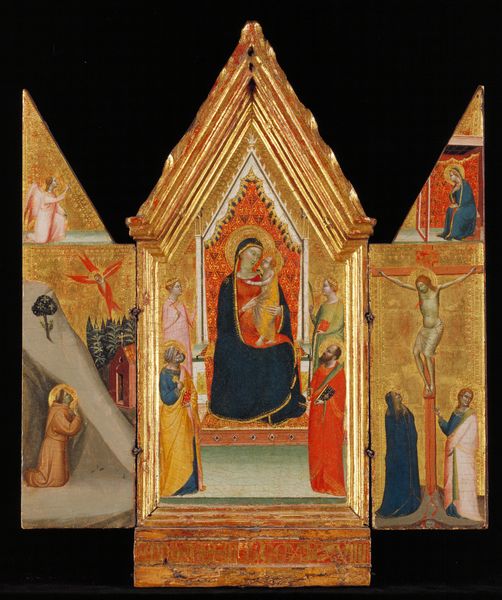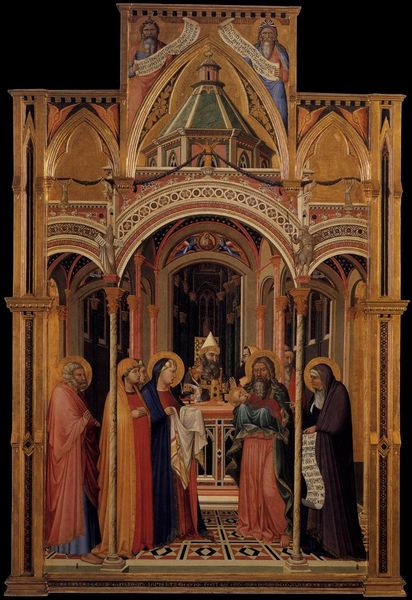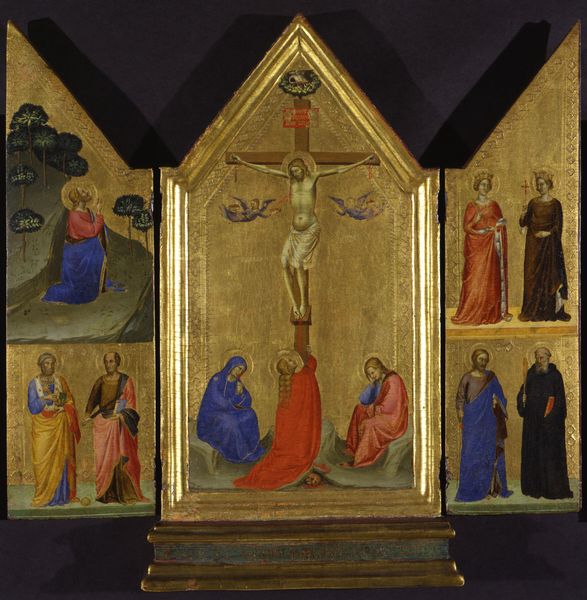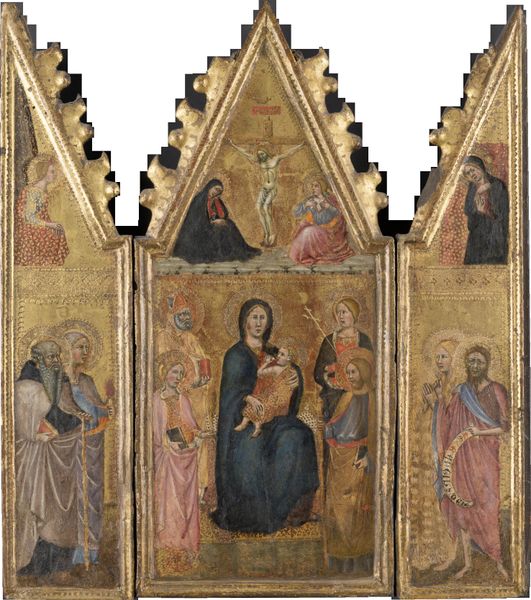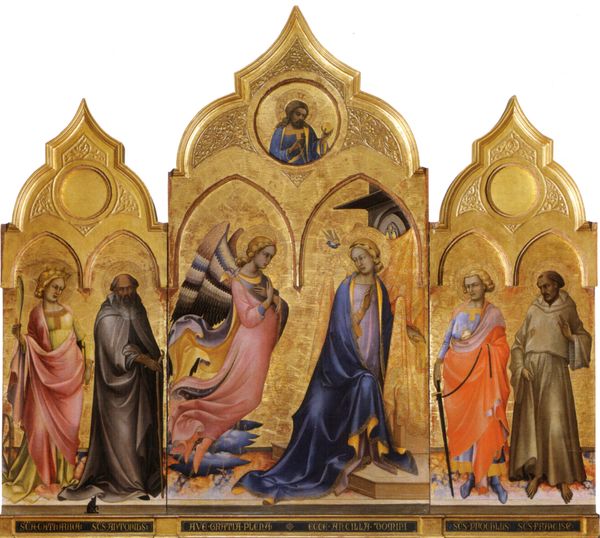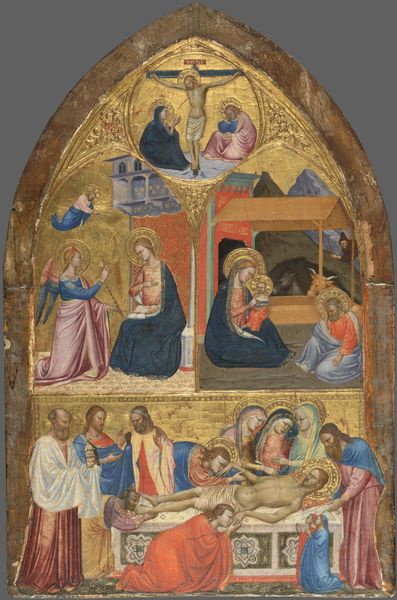
panel, painting
#
panel
#
painting
#
sculpture
#
holy-places
#
sculptural image
#
figuration
#
historic architecture
#
traditional architecture
#
child
#
christianity
#
history-painting
#
italian-renaissance
#
early-renaissance
#
virgin-mary
#
miniature
#
historical building
#
christ
Copyright: Public domain
Editor: Here we have Fra Angelico’s “Cortona Polyptych” from 1437, made with tempera on panel. The use of gold leaf gives it such a heavenly glow, but I’m also struck by the incredibly detailed narrative scenes at the bottom. What stands out to you? Curator: For me, it’s the explicit connection between material value and spiritual narrative. The gold leaf isn’t just decorative; it’s a calculated investment of wealth, intended to visually communicate power, patronage, and religious doctrine. This piece speaks to the economic realities intertwined with artistic production of the Early Renaissance, doesn’t it? Editor: Definitely. Thinking about the people who would have mined and processed that gold… it’s a far cry from the idealized scenes depicted. How would its original audience have understood the materiality of such works? Curator: Consider the labor involved, and the cost of these materials. It suggests a wealthy patron willing to expend significant resources to commission a piece like this, which serves as a public display of their piety and economic might. The ultramarine blue, derived from lapis lazuli, also underscores the patron's investment. Editor: It’s interesting to think about the ‘value’ they placed on certain materials versus others, and how that informs our understanding today. It’s easy to get caught up in the artistry and forget the economics. Curator: Precisely! It pushes us to think beyond aesthetic beauty, considering the social and economic networks which underpin the artwork. Understanding the material composition helps reveal how the values were assigned, creating its cultural significance at the time, and now. Editor: I never considered the mining conditions in the Middle Ages before, and the gold having been shipped so far. Curator: We tend to think only about the holy people in the frame but rarely think about the labour that extracted them from rock. Now, let’s think about this more in relation to religious expression and piety. Editor: This gives me a whole new perspective. I guess art truly is never just about aesthetics! Curator: Indeed. The "Cortona Polyptych" teaches us how art production is inevitably entwined with labour, power, and commerce.
Comments
No comments
Be the first to comment and join the conversation on the ultimate creative platform.
